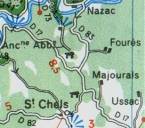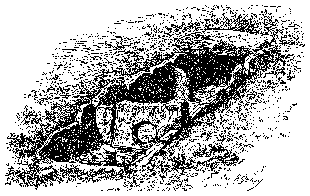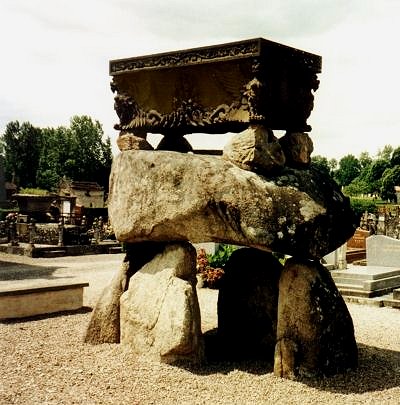|
click
the French megaliths
ireland
the
earth-mother's
Click here to see
|
|
|
SOME MEGALITHS OF WESTERN FRANCE
A 16th century sketch of the Pierre Levée, Poitiers
A 19th century drawing of
the Gallery-tomb
Anthony Weir Dolmen of the type known in French as Dolmen Simple at Crocq (Creuse) (The
word dolmen
is an 18th century antiquarian term which is Frenchified fake-Breton
for 'stone table'; likewise the word menhir
is supposed to mean 'long stone' , but the actual Breton is
peulvan
or 'stone pillar'.)
Dolmen moved to the churchyard of Confolens (Charente)
Whereas France is well-supplied with comprehensive and widely-available guides to Romanesque churches, there are none (in English) for the thousands of prehistoric tombs and menhirs outside Brittany. In Britain it is the other way round. The megalith-hunter in France must resort to the random marking of megaliths by a p on Michelin maps,
to
the equally random mentions in tourist pamphlets, It must be said that of the thousands of French chamber-tombs, not many have the attractiveness nor the ambiance of the hundreds scattered all over Ireland. A great many - especially those on the limestone causses of the southwest - are just basic dolmens simples, or coffres (stone boxes, megalithic cists) of interest chiefly to professional archæologists. Planchat (Creuse)
Most
are to be found in woodland,
see an old postcard (by courtesy of Gavin Parry) enlarge
enlarge
Miré (Maine-et-Loire) some in fields, and some have been dismantled and hauled (even hundreds of miles) to châteaux or to graveyards. Confolens (Charente): a simple dolmen bought for 100 francs in 1892 and moved nearly 5 km from Périssac to the town churchyard - as a support for the sarcophagus of "a lady much addicted to dolmens" (Glyn Daniel). - or to the dry moat of the palace of Saint-Germain-en-Laye, north-west of Paris, which is now France's foremost and marvellous archæological museum. Gallery-tomb (allée-couverte)
from Conflans-Sainte-Honorine (Oise)
...and a detail of a side-slab
showing a small natural orifice or perforation strategically-situated
in the limestone.
Villers-Saint-Sépulcre (Oise)
Some
I photographed without marking them on my map, or I have subsequently
lost the map (as I have repeatedly done with cameras).
Tomb with collapsed capstone
at Bouchet, near Gennes
|
Click
here to see a group of monuments around Arras
in the Pas-de-Calais
Enhanced
versions of these pages are included on the

developed from this website.
![]()
This site
is a member of Join
Ring |•|
Ring
Hub |•|
Random
site
|






















